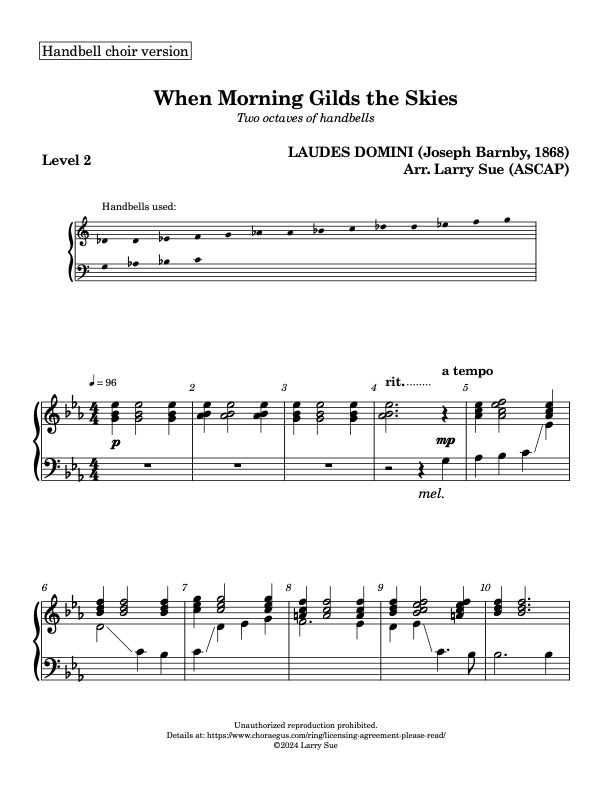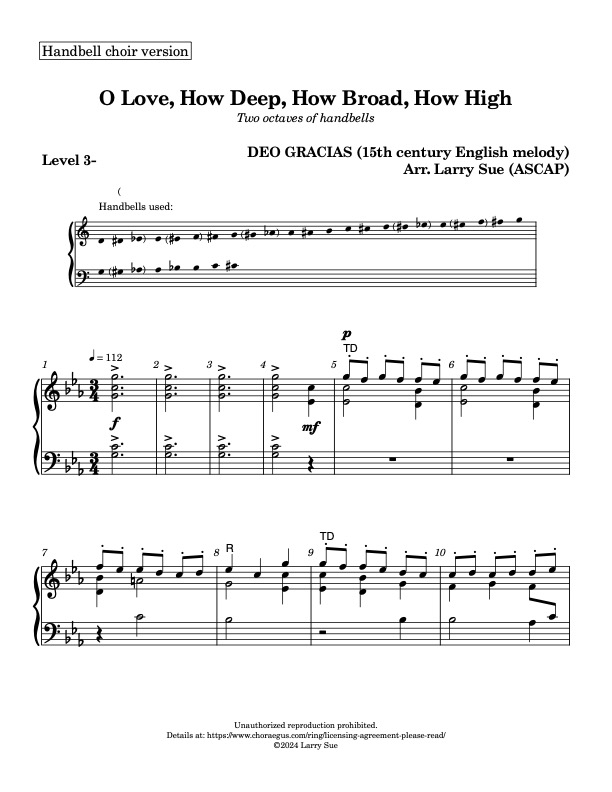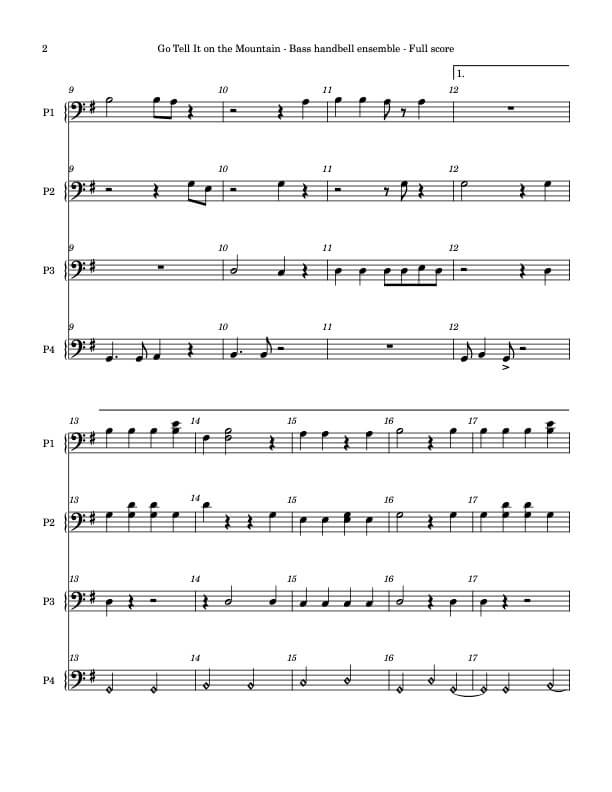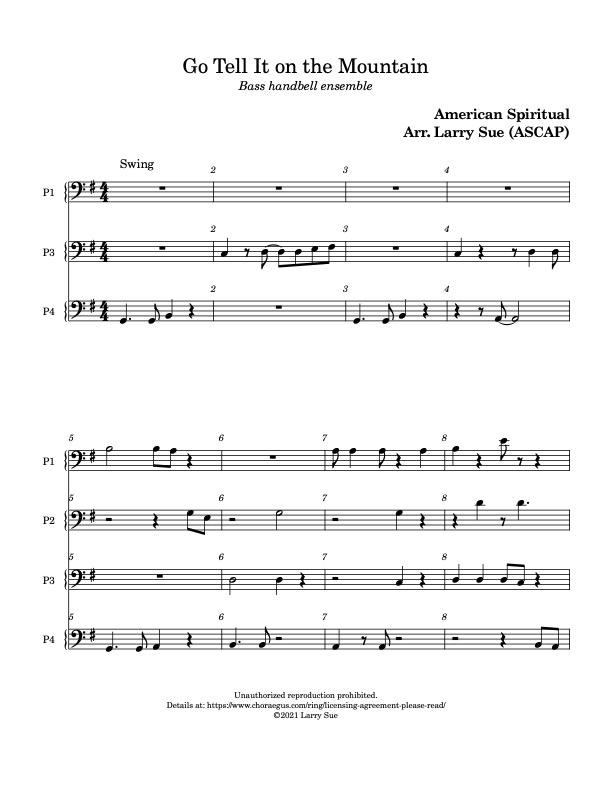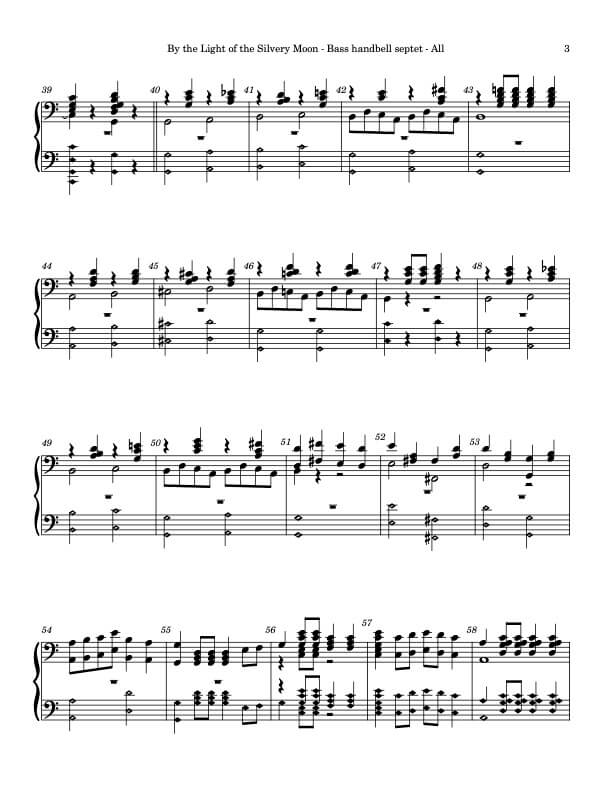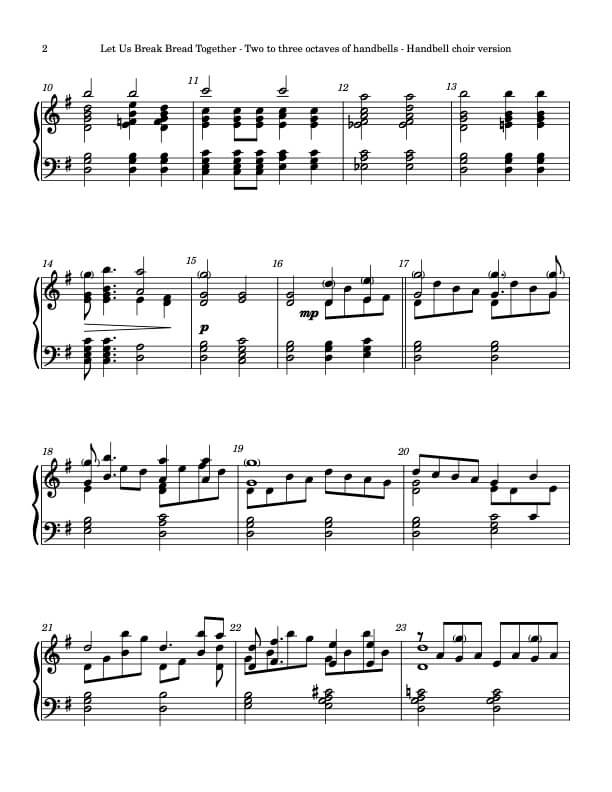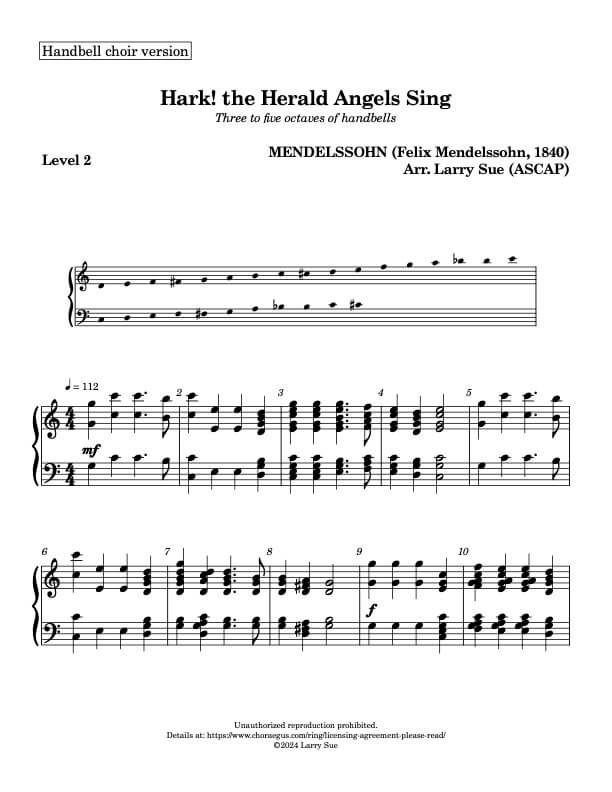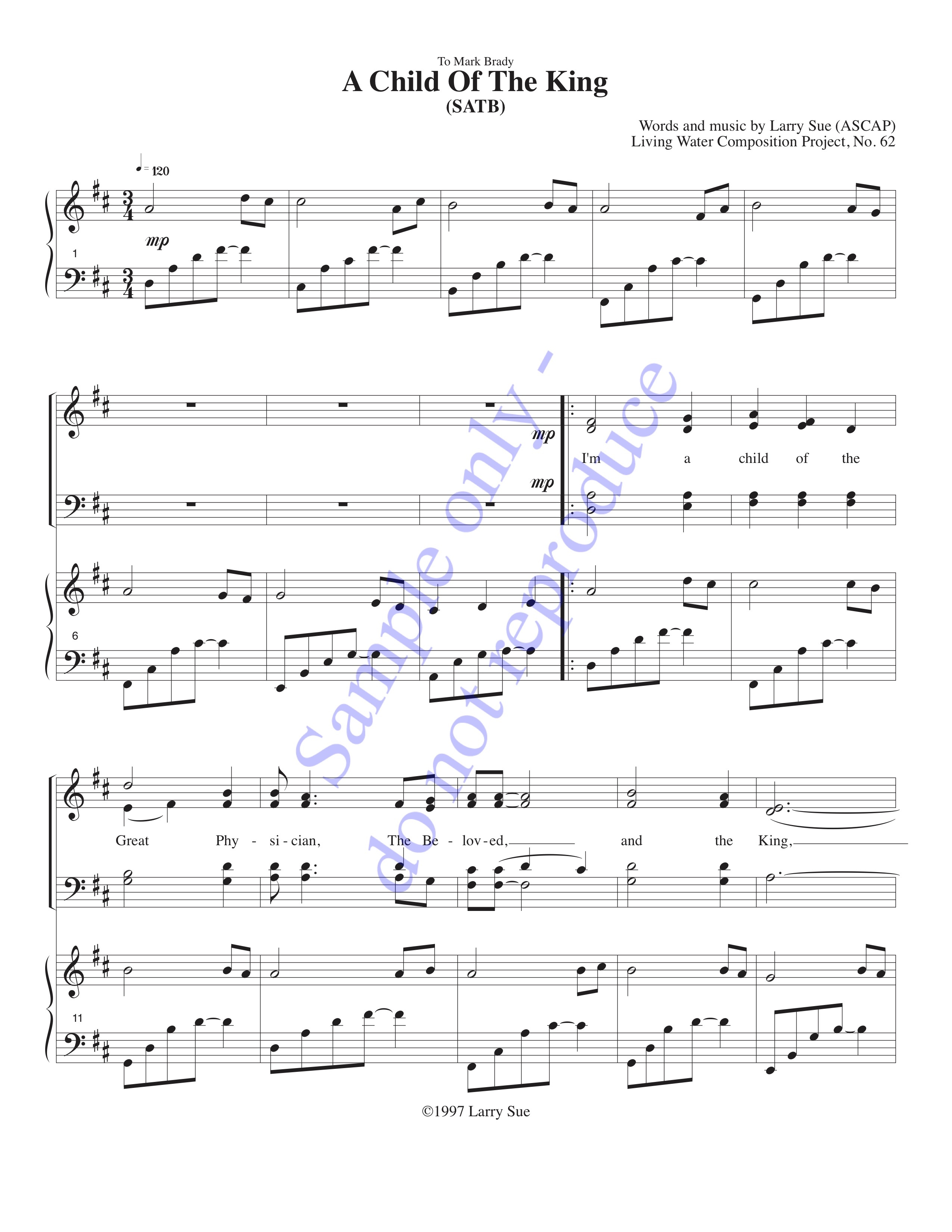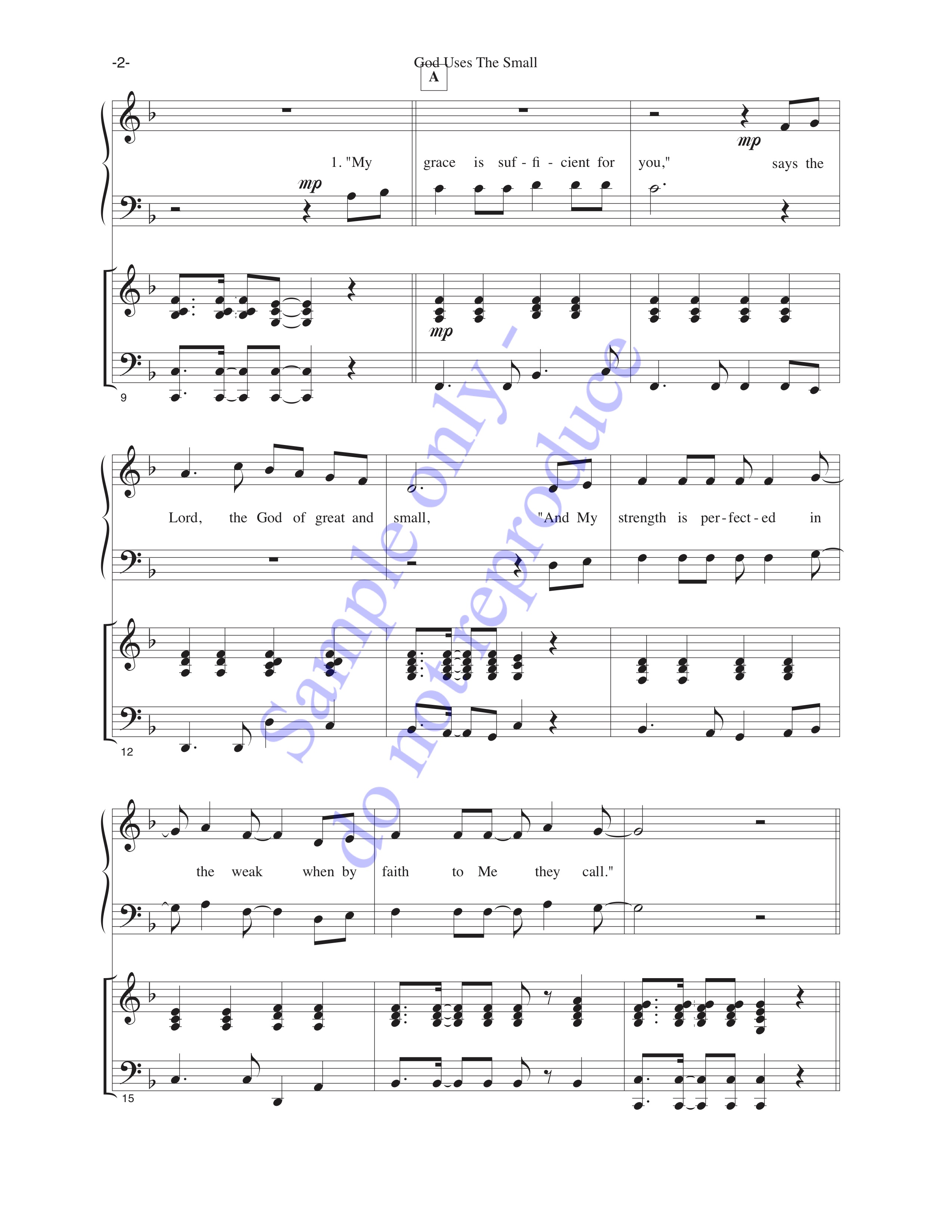In case you didn’t already know, handbell music is notated an octave lower than the bells actually sound. For instance, the “middle C” that handbell ringers read really is the C that’s on the third space (counting upward) of the treble staff. The convention in place, however, is to name a particular note by its letter name (possibly with an attached “flat” or “sharp”) and an octave number. Octave numbers are oriented toward the standard 88-key piano, where the bottom C is called “C one” and written “C1”. That makes a piano’s middle C to be C4, and its top key to be C8. Yes… it’s okay to dash over to your piano to check!
The current production range across all bell manufacturers is G1 to C9. That’s seven-and-a-half octaves, just a bit wider than an 88-key piano… but about an octave notes higher. C9 in piano-speak is nine ledger lines above the staff, and that makes it more than a bit challenging to (sight) read if you notate handbells a la piano. At the bottom end of the scale, C2 is only two ledger lines below the bass staff. So it makes a lot of sense to transpose the bell notes one octave downward so that their pitch range is centered vertically on the grand staff.
Here’s a quick comparison of the Cs in each instrument:
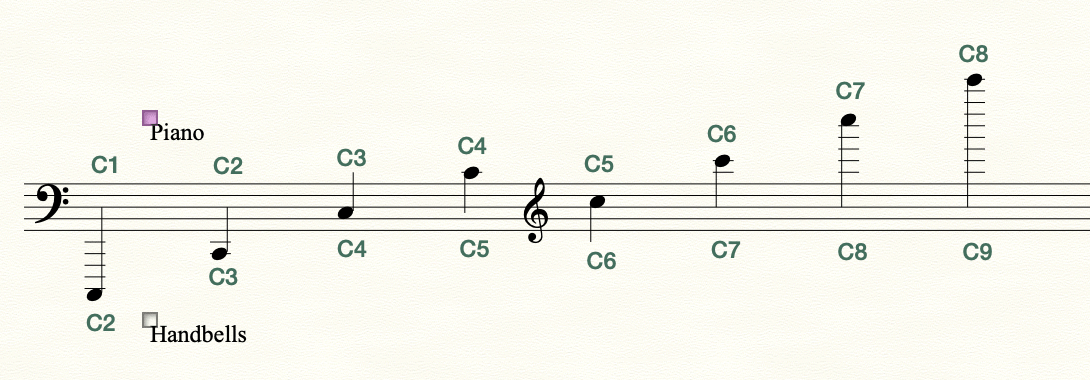
There are other devices implemented in handbell music that make scores easier to read. The primary one is expressed as “doubling”. To ringers, this means to add/play the note an octave higher in the treble, and the note an octave lower in the bass. Then it’s possible to get around reading tons of ledger lines unless the composer wants those extreme notes out there on their own. Here’s an example:

In real life, it also turns out that handbell ensembles acquire their bells starting from the middle of the range and working outward. It’s an act of cooperation between musicians, publishers, and manufacturers. It makes it easier for the musicians to read the scores, and standardizes the publication/editing process. Finally, the bells at the extreme ends of the range are less frequently played; in the case of the lowest bass bells, they also are frightfully expensive (currently up to about $7,000 apiece), so most ensembles are still figuring out how to get them. That means that with the octave-down transposition, the music is very readable.
And making life easier for everyone is a big step to keeping us all happy and making great music!

